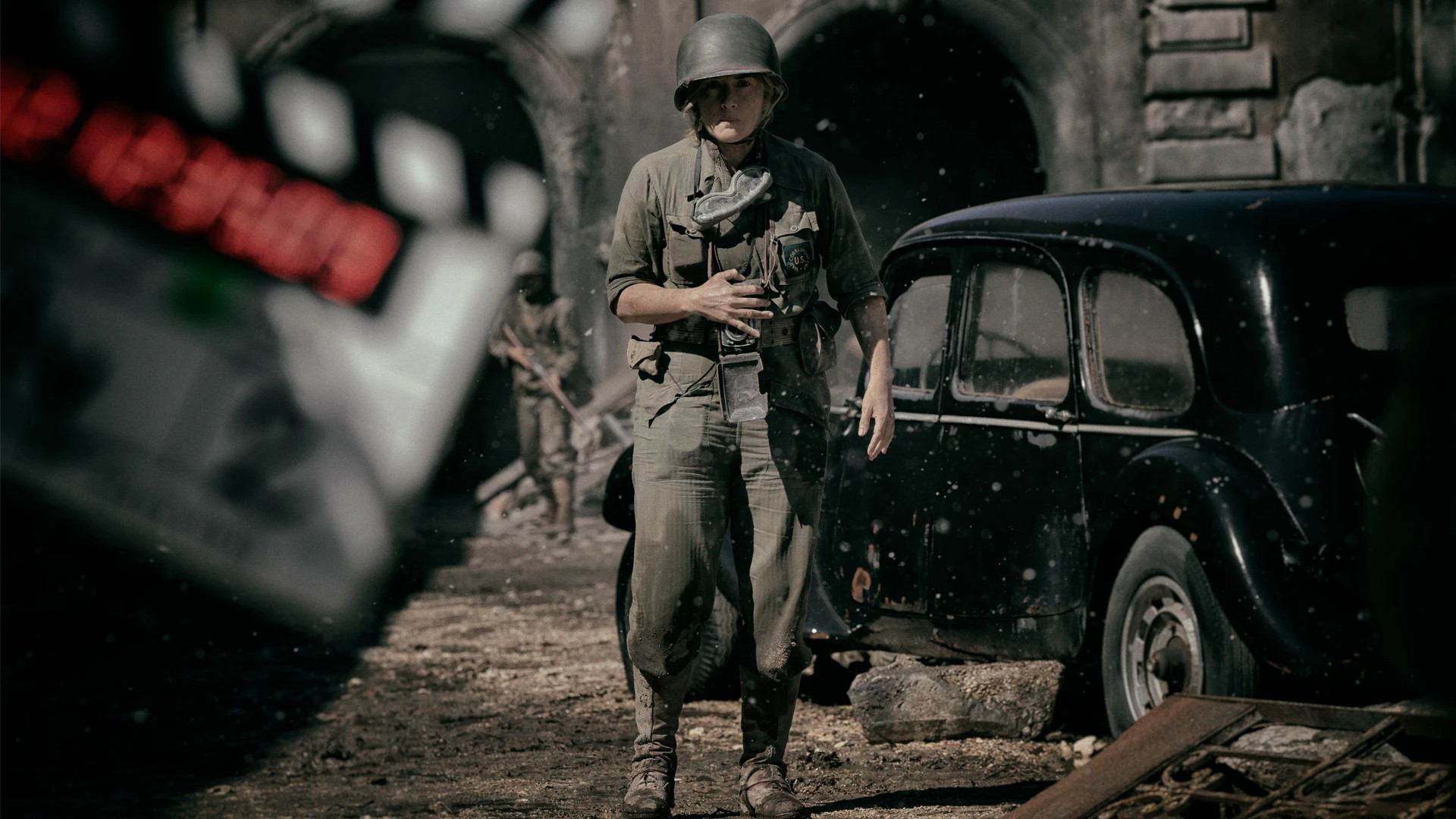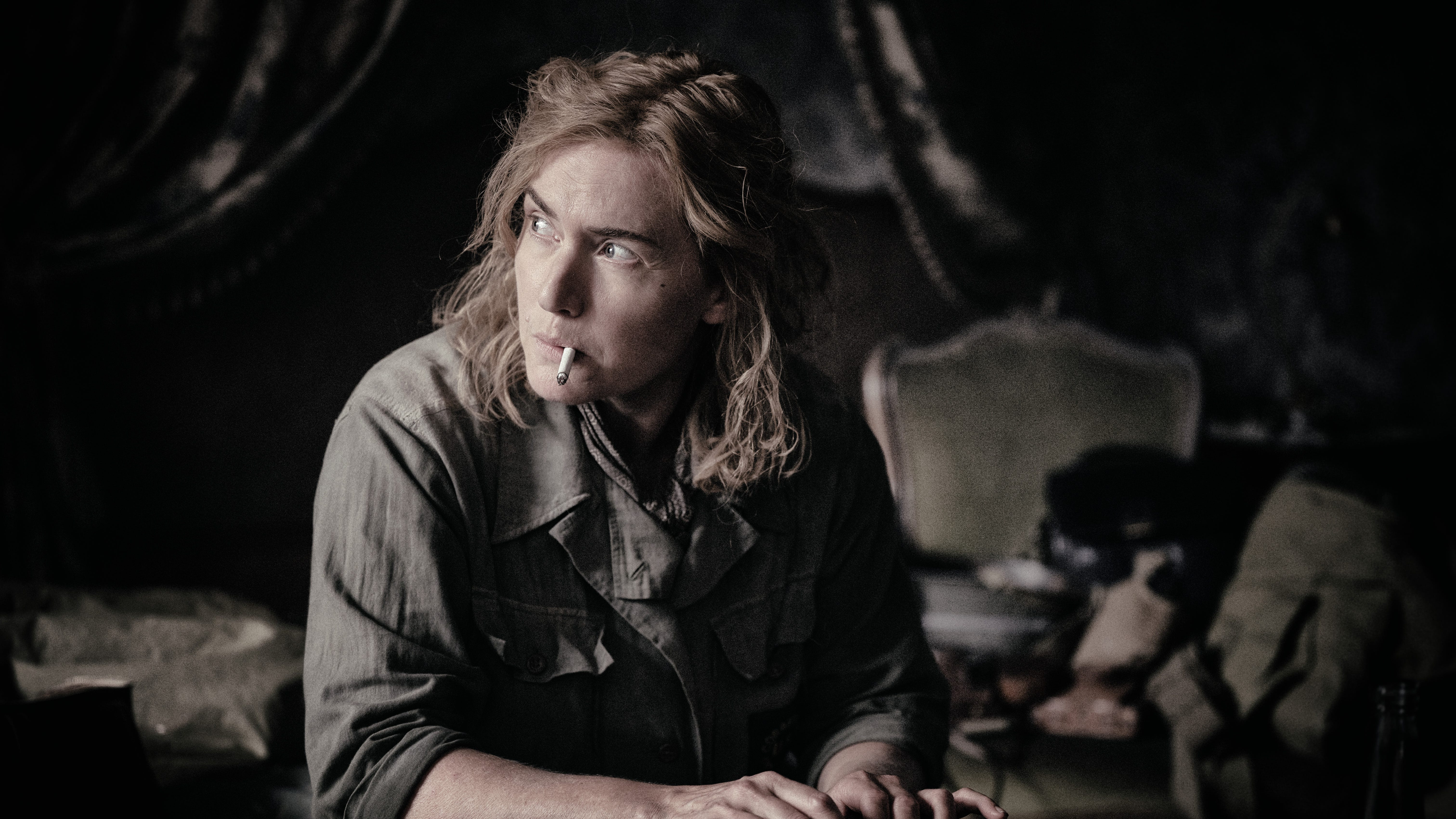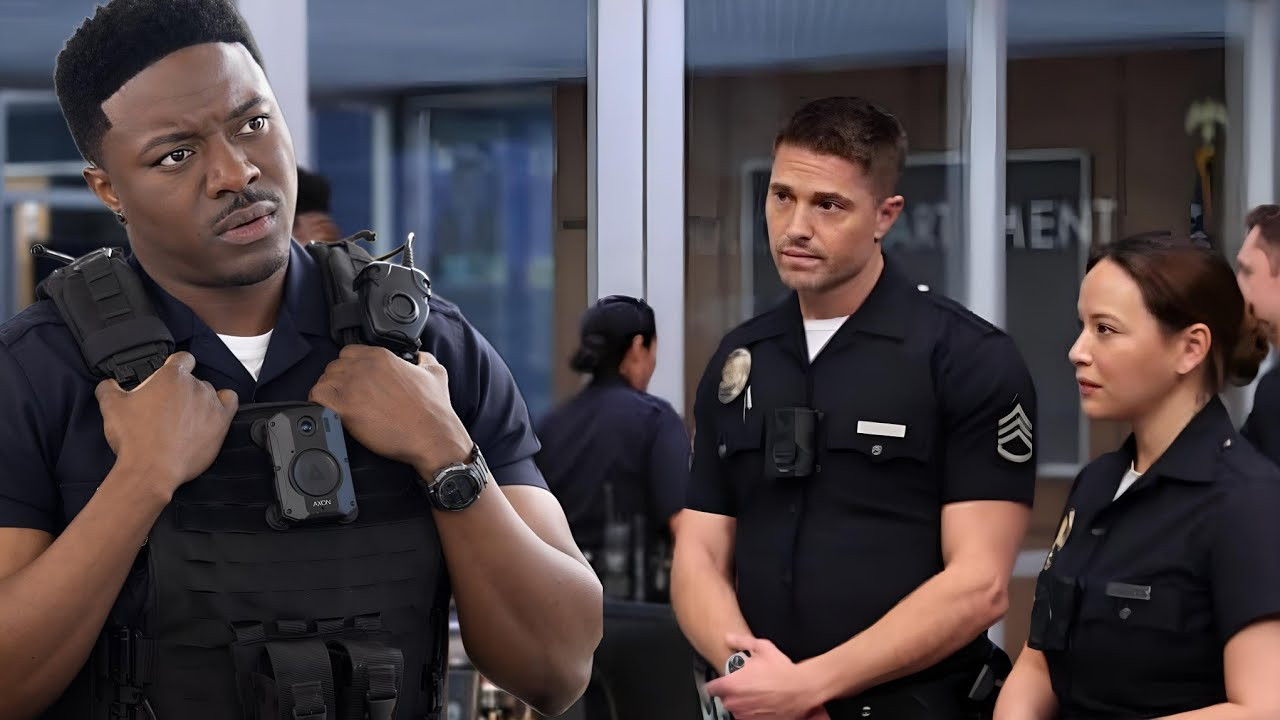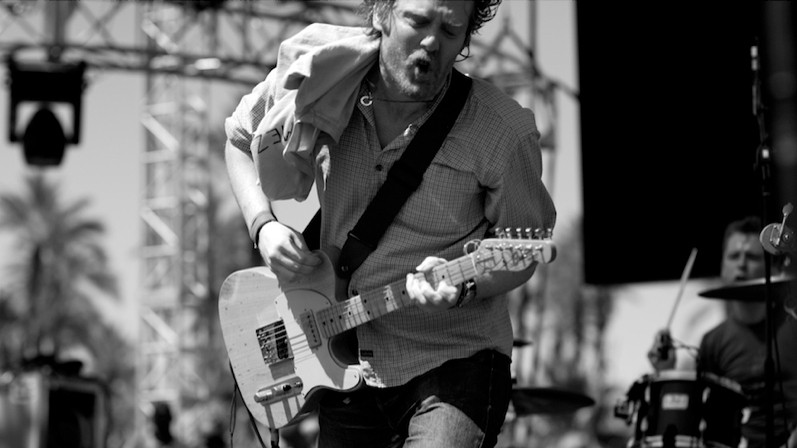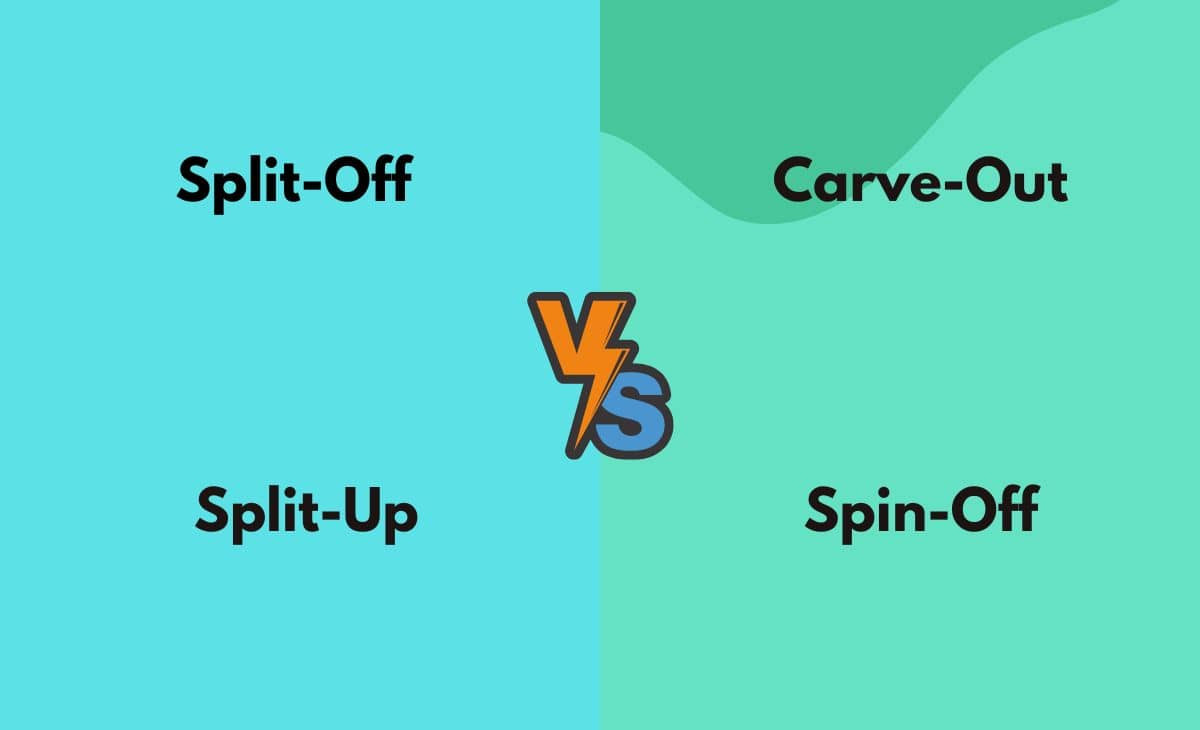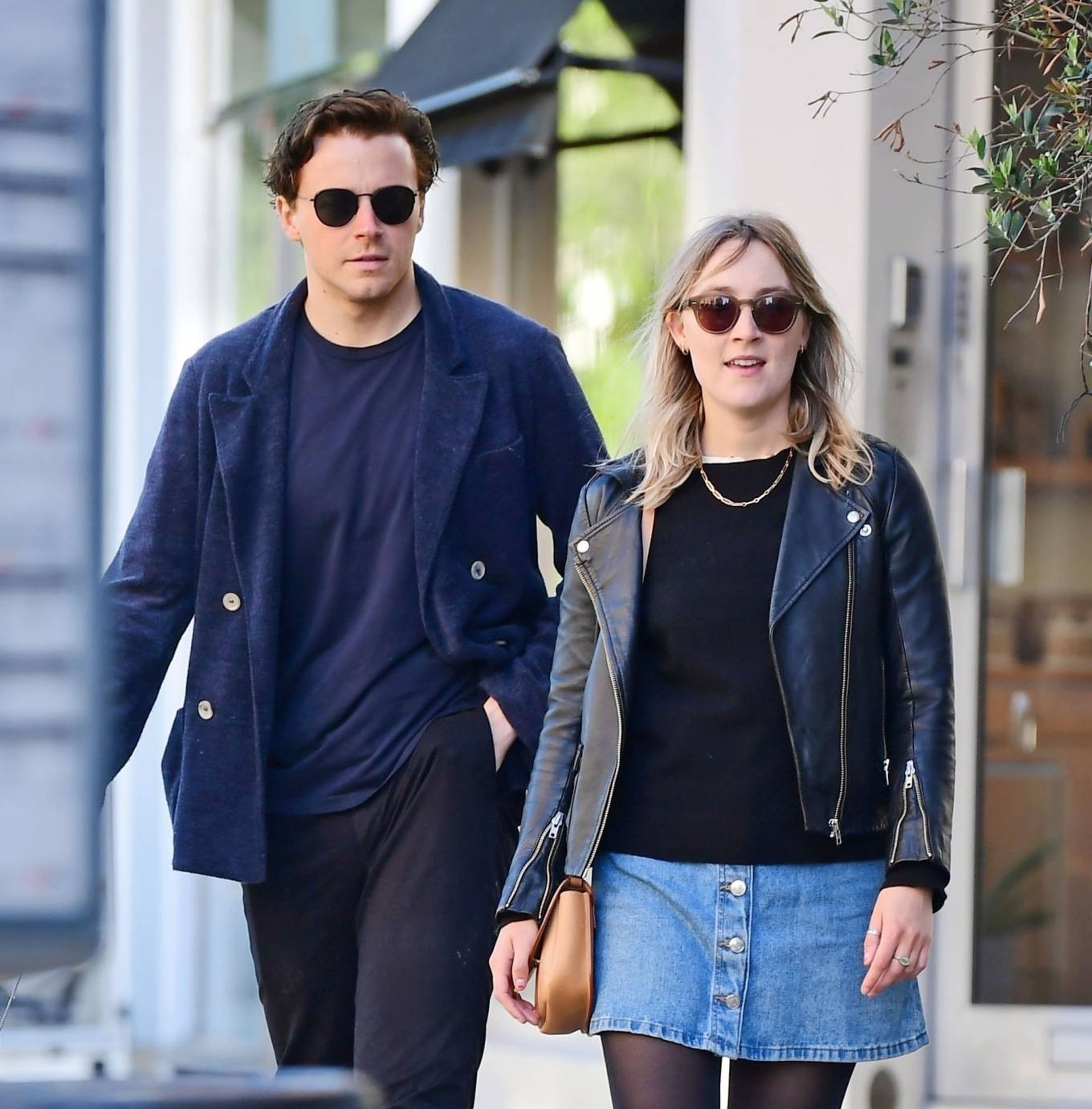Cinematographer Ellen Kuras, who was hired by actor to make her directorial debut, says biopic of photojournalist shows woman plunged ‘into heart of darkness’
The Oscar-winning actor, who is the lead star and co-producer of Lee, released in cinemas this week, wanted to portray American Miller as “a truth-seeker and a truth-teller”. She felt that Miller brought a particular sensitivity when she reported on the battle of Saint-Malo in the second world war, field hospitals in Normandy and the Dachau and Buchenwald concentration camps.
Winslet said “there was no question that it would be a woman who would direct this film”, according to production notes.
Miller, who died in 1977, is remembered as a model for Vogue and the muse and lover of surrealist artist Man Ray in her earlier life. But, during the second world war, she became a pioneering war correspondent and photographer, defying expectations of the time to report from the frontline. She once said: “I’d rather take a picture than be one.”
In focusing on that particular decade of Miller’s life, Winslet has said she hopes to dispel “preconceived ideas about Lee Miller as the model and the subject of many male artists’ gaze”.
Winslet offered the opportunity to direct the film to Ellen Kuras, who had worked as cinematographer on the films Eternal Sunshine of the Spotless Mind and A Little Chaos alongside Winslet. Lee is Kuras’s feature debut. She also co-directed The Betrayal (Nerakhoon), a 2008 documentary about refugees, which won an Emmy award.
Although Winslet has been nominated for an Oscar five times and won in 2009 for The Reader, it took her more than eight years to get the film about Miller made.
Kuras told the Observer that potential investors had been “patronising” in their dismissal of Lee as “a woman’s story”, asking: “Why would you want to make a story about her?”
She said that previous attempts to make a film about Miller had tended to be more from a male perspective, showing her as a “damaged woman” rather than understanding the toll that the war took on her.
“She was not unlike a lot of people who returned from the war, who had PTSD, and couldn’t talk about what happened,” she added.
Kuras also hopes the film will “skew the perspective to a place where Lee’s known for her work and for who she was – not only for the men that she was attached to”. She added: “The tendency is [to] see women through men. [We’re] looking at her as someone who stepped from the front of the camera and went behind the camera … to take control of the image … create her own story.
“Lee is a great role model because she wasn’t given the opportunity to become a war correspondent. She went out and found it. She followed her own intuition in the pursuit of telling the truth and the pursuit of justice.”
Her film, she said, portrays “a woman who threw herself into the heart of darkness”.
Winslet said last month she had refused to hide her “belly rolls” in the film during a scene in which she is wearing a bikini. The film will also recreate Miller’s famous self-portrait in Hitler’s bath at his apartment in Munich, with her boots darkening the bathmat with the mud of Dachau.
Kuras said that, because Miller had felt “objectified” as a model, as a director she was all the more concerned to ensure that scenes did not become “sexualised or objectified”.
The Life and Legacy of Lee Miller
Lee Miller was a woman of many talents and contradictions. She was a successful model, a pioneering photographer, and a fearless war correspondent. But she was also a complex and troubled individual, haunted by the horrors she witnessed during World War II and struggling with the trauma of her past. The film Lee, directed by Ellen Kuras and starring Kate Winslet, explores the many facets of Miller's life, from her early days as a model to her time as a war photographer and her later years as a chef and homemaker.
Early Life and Career
Miller was born in 1907 in Poughkeepsie, New York. She began her career as a model, gaining recognition for her unconventional beauty and striking features. She quickly rose to fame, appearing on the covers of magazines such as Vogue and Vanity Fair. But Miller was not content with simply being a pretty face. She was drawn to the world of photography and began to experiment with the medium, eventually opening her own studio in Paris. She was also drawn to the surrealist movement and became a close friend and collaborator with artist Man Ray.
War Photographer
Miller's life took a dramatic turn during World War II. She became a war correspondent for Vogue, documenting the conflict in Europe. She traveled to the frontlines, capturing images of the devastation and the human cost of war. Miller's photographs are renowned for their honesty and their powerful portrayal of the suffering and resilience of those caught in the conflict.
Post-War Life
After the war, Miller returned to England and settled down with her husband, the surrealist artist Roland Penrose. She continued to work as a photographer, but she also found a new passion in cooking. She spent her later years at Farleys, the home she shared with Penrose in Sussex, where she cultivated a love for food and cooking. She wrote cookbooks and hosted dinner parties, finding solace in the domesticity and creativity of the kitchen.
A Woman of Many Faces
The film Lee delves into the complexities of Miller's life, portraying her as a strong and independent woman who defied societal expectations. It explores her resilience in the face of adversity, her determination to tell the truth, and her struggle to come to terms with the trauma she experienced during the war. It also highlights her multifaceted nature, showcasing her talents as a model, photographer, writer, and chef.
The film’s opening scene, a heart-pounding sequence of Kate Winslet as Lee Miller racing through the midst of explosions, establishes her fierce determination. It is the type of scene that director Ellen Kuras, who had previously worked as a cinematographer on films such as Eternal Sunshine of the Spotless Mind and A Little Chaos, excels at crafting.
The Impact of the War
One of the film’s most compelling themes is the impact of the war on Miller. Kuras, a woman who was drawn to Miller’s story because of her own struggles with grief, conveys the toll that the war took on her. “She was not unlike a lot of people who returned from the war, who had PTSD, and couldn’t talk about what happened,” Kuras says.
The film captures the brutality of the war through Miller’s lens, but it also delves into the emotional and psychological scars left behind. It shows her struggle to reconcile the horrors she witnessed with her desire to create art and beauty.
Reclaiming Her Narrative
The film also emphasizes Miller’s attempts to reclaim her own narrative. She was often seen as a muse or subject, but she was a talented artist in her own right. The film highlights her work as a photographer and writer, demonstrating her independent spirit and her desire to be recognized for her own accomplishments. It is important to note that Winslet played a crucial role in ensuring that the film was directed by a woman. She insisted on having a female director, as she believed that Miller’s story was best told through a woman’s lens.
The Legacy of Lee Miller
Miller’s legacy is one of courage, resilience, and artistic vision. She was a woman who dared to break barriers and defied societal expectations. She used her talent as a photographer to document the world around her, capturing both beauty and brutality with unflinching honesty. She was a complex and fascinating individual, and her story continues to inspire generations of artists, writers, and photographers.
The film Lee is a powerful and moving tribute to Miller's life and work. It is a film that will stay with you long after you have seen it, leaving you pondering the complexities of human nature and the enduring power of art.
A Culinary Legacy
After the war, Lee Miller sought refuge in the domesticity of Farleys, a house she shared with her husband, Roland Penrose. In the kitchen, she found solace from the horrors of war and a new creative outlet: cooking. She had a deep love for food, and she was an avid collector of cookbooks, amassing a library of over 2,000. Her culinary creations were known for their vibrant colors, unique flavor combinations, and a touch of whimsy.
One of her most well-known dishes was sesame chicken, which she named after her friend, the artist Joan Miró. Other signature dishes included her “Persian Carpet” (a colorful and spicy lamb dish), “Red Pepper Platform” (a savory dish featuring red peppers, almonds, and pistachios), and “Cauliflower Breasts” (a creative twist on traditional cauliflower recipes).
Her passion for food was evident in her final cookbook, which she titled “The Entertaining Freezer,” a testament to her love for hosting dinner parties and entertaining guests.
A Home Full of Secrets
Farleys House, where Lee Miller and Roland Penrose lived, is a testament to their creative lives. The walls are adorned with Penrose’s paintings, and the gardens are filled with sculptures. The house is a unique blend of art and domesticity, a reflection of the couple’s unique personalities.
But beneath the surface of this artistic idyll, secrets were hidden. In the attic of Farleys, Miller's son, Antony Penrose, discovered a treasure trove of negatives, manuscripts, and personal letters. This discovery would lead him on a journey to uncover his mother's true story and the hidden trauma she had carried for decades.
The discovery of these hidden secrets revealed a new dimension to Miller's life and work. It showed her as a complex and troubled individual who had been deeply affected by the horrors of war and the trauma of her past.
A Journey of Discovery
The discovery of Miller’s secret past had a profound impact on Antony Penrose. He realized that he had never really known his mother, and he embarked on a journey to uncover her true story. He traveled to America and Europe, interviewing those who knew his mother and piecing together the puzzle of her life.
Penrose’s research revealed a shocking truth: Miller had been sexually abused as a child. This trauma had a lasting impact on her life, contributing to her struggles with mental health and her difficulty forming lasting relationships.
The revelation of this past helped Penrose to understand his mother’s work in a new light. He realized that the images she captured during the war were not just about documenting the horrors of conflict; they were also a way for her to express her own internal struggles and to confront her past trauma.
A Legacy of Truth
Through her work and her life, Lee Miller left behind a legacy of truth, resilience, and artistic vision. She dared to see the world with unflinching honesty, and she used her art to give voice to the suffering of others. Her story is a reminder of the enduring power of art to heal, to inspire, and to challenge the status quo.
The film Lee is a powerful testament to her life and work, offering a glimpse into the complexities of her world and the lasting impact of her art. It is a film that will stay with you long after you have seen it, prompting you to reflect on the nature of trauma, the importance of telling the truth, and the indomitable spirit of a woman who dared to live life on her own terms.




